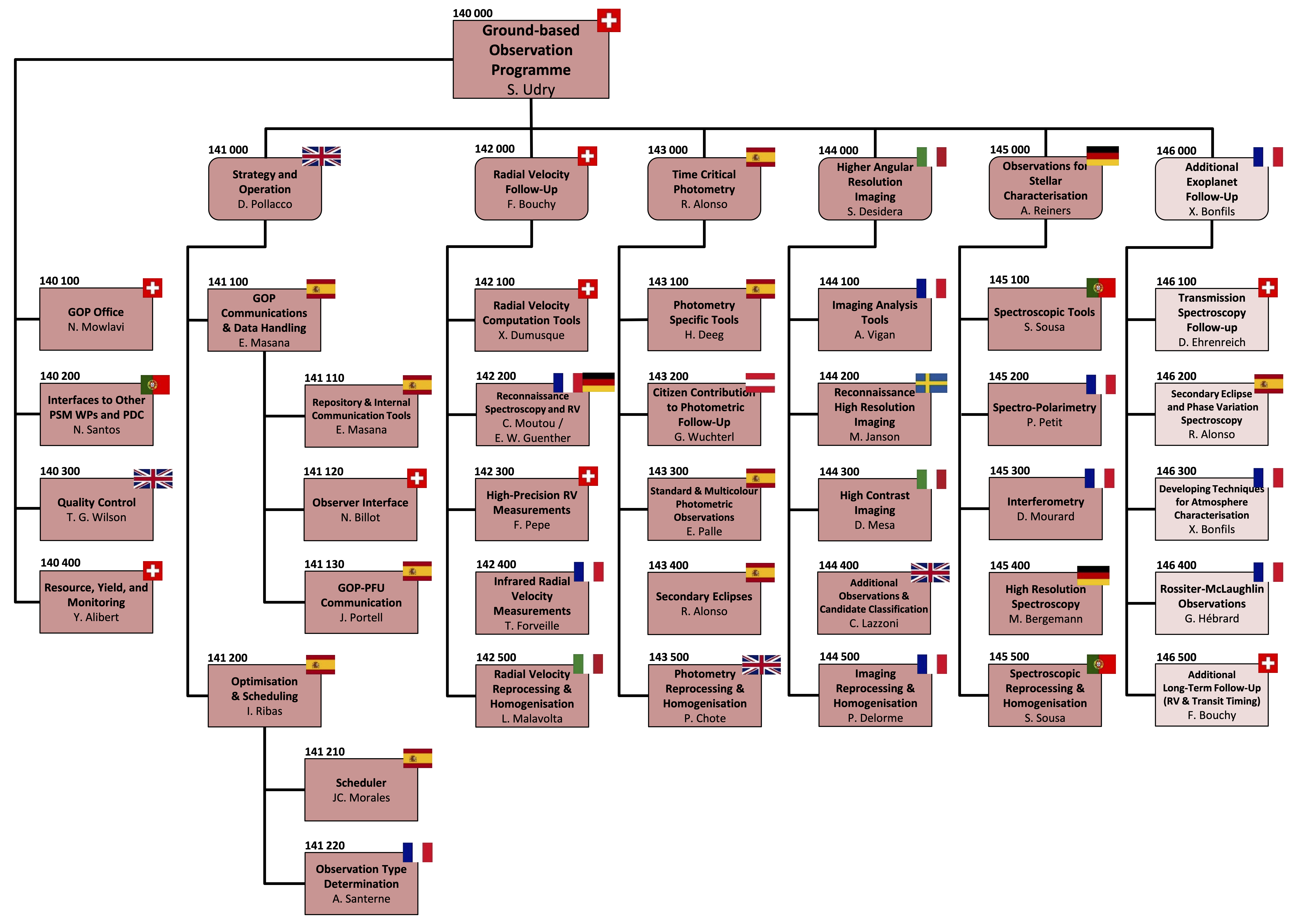Ground-based Observation Programme
PLATO's main goal is exoplanet discovery. To separate true planet candidates from false positives such as eclipsing binaries, and to confirm the presence of planets, a strong follow-up program is required.

(Updated 23rd February 2024. To download this organisation chart, please visit the Organisation Charts page)
The main science product of PLATO will be a sample of fully characterized planets of various masses, sizes, temperatures, and ages, with a particular emphasis on terrestrial planets in the habitable zone of their parent stars. To reach this ambitious goal, it is vital that the space-based photometric transit detections and asteroseismic characterisation are supported by a strong ground-based program. This is particularly important for the follow-up of candidate planetary systems.
The Ground-based Observation Programme has multiple roles:
- Discarding false positives. There are many possible situations that can produce photometric signatures which mimic planetary transits. These include eclipsing binary stars, background blends, multiple star systems, etc., and must be identified and discarded. This process will make use of expertise gained from successful ground-based transit surveys, such as SuperWASP, as well as with the CoRoT and Kepler space missions. A battery of diagnostic tests have already been developed to detect the most common false positive configurations directly from photometric lightcurves.
- Complementary observations. There are many planet properties that cannot be characterised from photometric lightcurves. A system of complementary observations will be carried out to provide information on these properties, including the derivation of planet masses via radial velocity observations.
- Additional science. Tools and skills developed for follow-up observations will be used to plan further complementary science that can be done for confirmed planets.
The most efficient ground-based surveys, targeted at giant planets, still have between five and sixe times more false positives than real planets in their candidate lists. This ratio seems to become more favourable when targeting smaller planets with space-based missions, but from the Kepler results it is still estimated that 50-70% of the candidates are not genuine planets. The final performance of the PLATO transit search program is thus ultimately determined by the associated follow-up capabilities.
